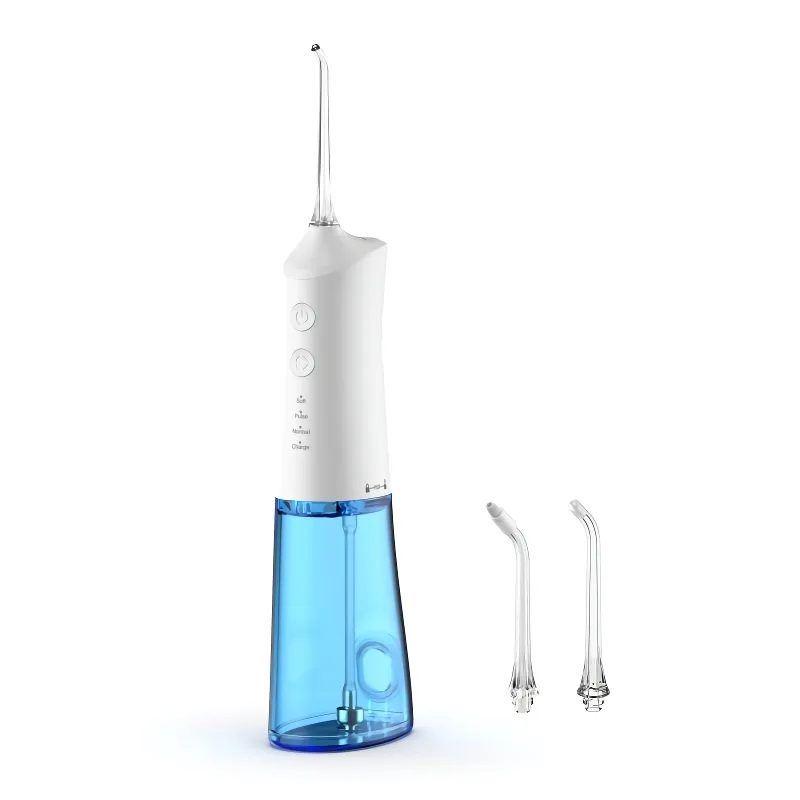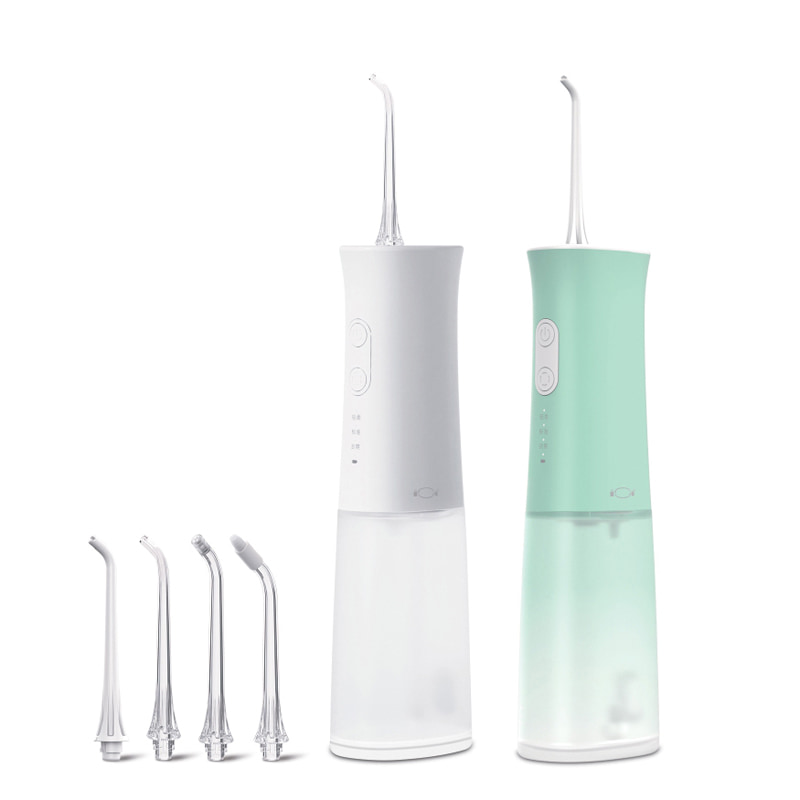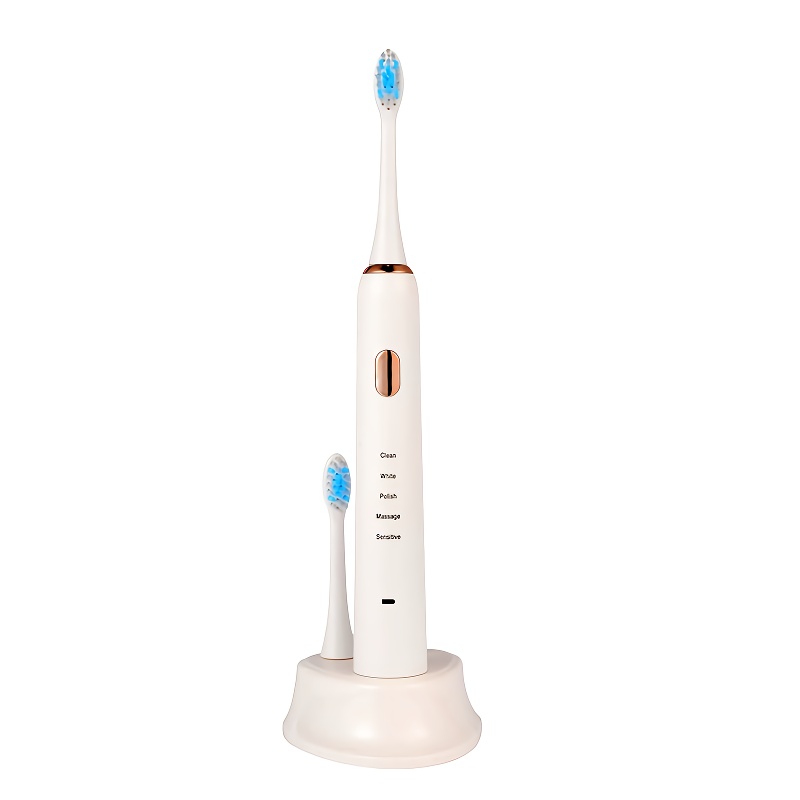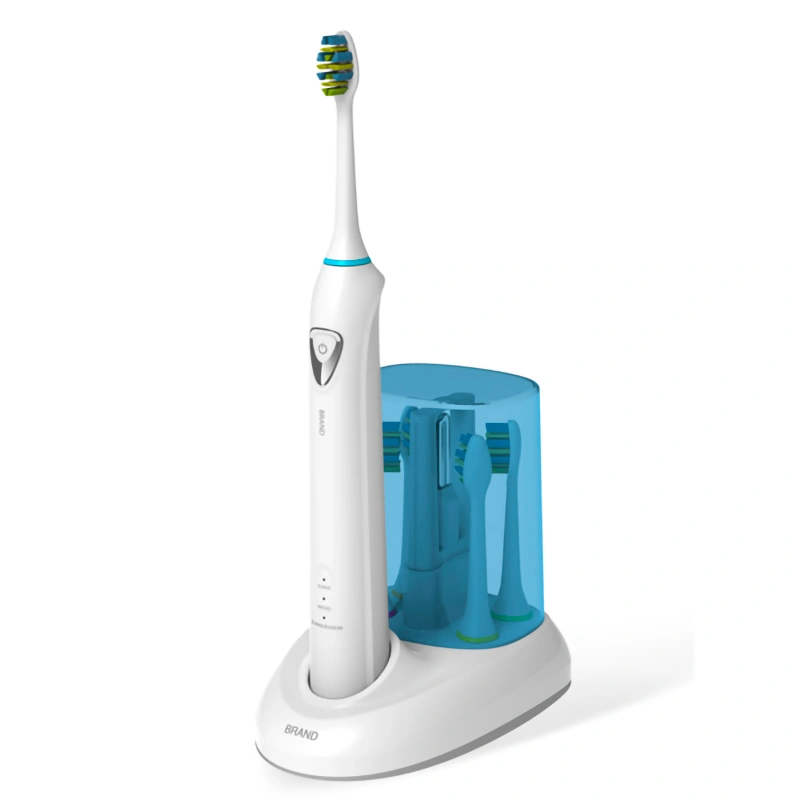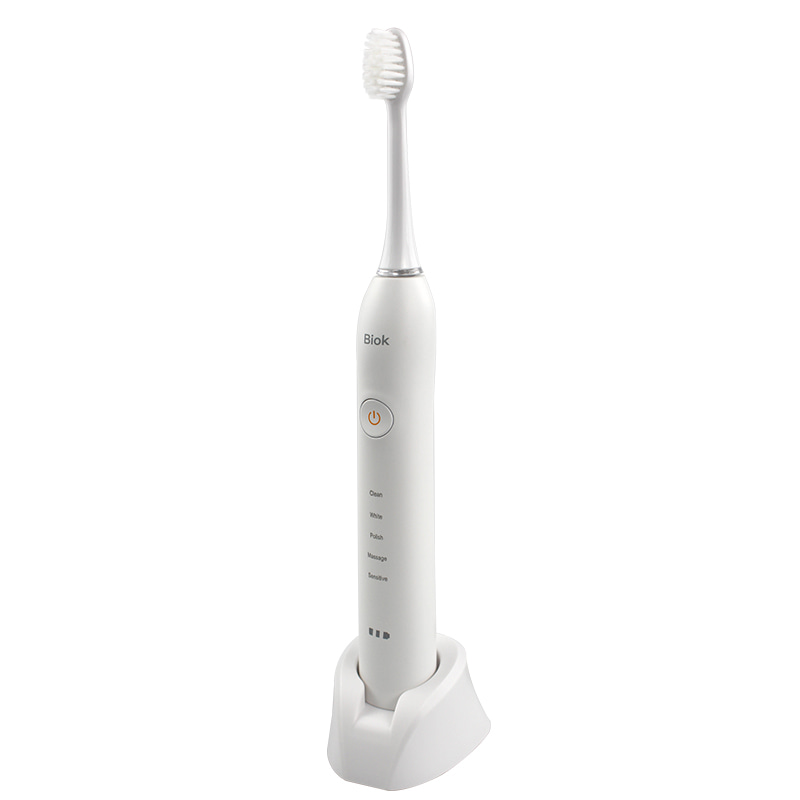What you should know about electric toothbrush! Test, information and experiences
The 3 types of electric toothbrushes
Electric, sonic or ultrasonic? Rotating or oscillating?
Electric toothbrushes can be divided into three different technologies, which also differ in application, brush head shape and brush head movement.
- Rotary toothbrush (electric toothbrush)
- Sonic toothbrush
- Ultrasonic toothbrush
Rotationszahnbürste
When we think of an electric toothbrush, we usually think of the rotary toothbrush. It is the classic electric toothbrush and was the first to hit the market. The acquisition costs are comparably low and they achieve a very good result when removing plaque and other deposits.
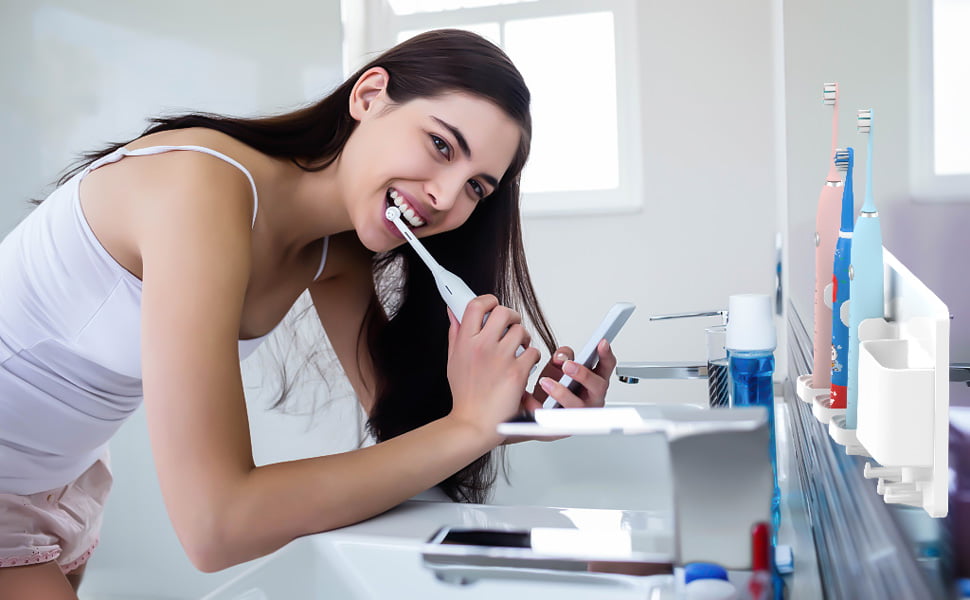
Unlike a sonic toothbrush, the rotary toothbrush is driven by an electric motor that imitates the circular cleaning movements of a manual toothbrush. The brush heads are always round, so that you can also tell which technology is involved.
The round brush head swings back and forth in a semicircle with 4,000 to 8,800 movements per minute tomorrow, so that all teeth are completely covered. With some models, the brush head movements are supplemented by additional impulses or vibrations (up to 40,000 per minute), which achieves an even more thorough result.
Since the round brush heads are relatively small, they can also be used to clean the back molars, which are often neglected with a manual toothbrush. The brush heads are also available in different designs. They differ, for example, in the length of the bristles, the arrangement of the bristles and the degree of hardness of the bristles.
Advantages and disadvantages of a rotary toothbrush
advantages
- very cheap, but still high-quality entry-level models
- a technology that has proven itself over decades, confirmed by studies
- significantly better cleaning results than with a manual toothbrush
- Compatible replacement brushes available cheaply (e.g. from DM & Rossmann)
- removes up to 100% more plaque, depending on the model
- even stubborn deposits are clearly visibly removed
disadvantage
- Compared to sonic toothbrushes, the brush head has to be replaced more frequently
- the mechanical pressure can be too high for sensitive teeth (can be controlled by a built-in pressure control)
- Without a pressure control there is a risk of damaging the enamel or the gums
By the way, Oral-B is the market leader and test winner in the field of electric rotary toothbrushes. You can find out which manufacturers are still there and which models have proven themselves in our electric toothbrush test.
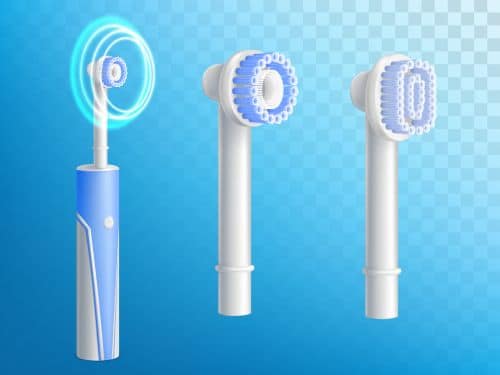
Sonic toothbrush
The difference to the rotary toothbrush is the technology behind it. Sonic toothbrushes are not driven by an electric motor, but also not by sound, which one would initially assume based on the name. It's not that the brushes produce sound waves, it's more of a publicity stunt by the electric toothbrush manufacturer. Sonic toothbrushes work via a built-in sound transducer. This is a device that converts acoustic signals into electrical signals. The brush head is therefore not moved mechanically, but set in vibration. Accordingly, the sonic toothbrush does not clean with sound, but with high vibrations.
The output should be around 62,000 vibrations or 31,000 oscillations per minute, as this will achieve the best cleaning result. It is ideal if different cleaning programs with a different number of vibrations are offered. Lower vibration frequencies are more suitable for acclimatization or for sensitive gums. Higher levels, on the other hand, remove plaque, food residues and discoloration much more effectively.
The brush head of sonic toothbrushes is elongated, which means that sonic toothbrushes look like a manual toothbrush. There are also different versions of a sonic toothbrush, which differ in the length and width of the brush head, the number of bristles, the bristle hardness and the arrangement and position of the bristles.
The vibrations in a sonic toothbrush achieve an optimal mixing of the toothpaste with saliva and oxygen and rinse them with high "momentum" even through narrow spaces between the teeth or hard-to-reach places. A sonic toothbrush is therefore particularly suitable for people with exposed tooth necks, gum problems, gum pockets or braces or implants.
Advantages and disadvantages of a sonic toothbrush
advantages
- an excellent cleaning result
- significantly more effective than a manual toothbrush
- also reaches tight places and spaces between the teeth
- no strong pressure, but gentle application necessary, which makes it very gentle on sensitive gums and sensitive teeth
disadvantage
- higher acquisition costs than an electric toothbrush
- Replacement brushes are on average more expensive, but also last longer
- slightly less effective for particularly stubborn plaque due to the lower pressure
The best known and most popular are Philips sonic toothbrushes, Oral-B sonic toothbrushes and Panasonic sonic toothbrushes. You can find out which models do particularly well in our electric toothbrush test.
Ultrasonic toothbrush
The ultrasonic toothbrush looks like the sonic toothbrush, but it is much faster or has a much higher sound frequency. The ultrasound is generated by a piezoceramic oscillator and up to 2.4 million oscillations per minute are possible.
The use of an ultrasonic toothbrush is different from the previously presented electric or sonic toothbrushes and takes a bit of getting used to.
The brush head is placed on each tooth individually without pressure and for about 10 seconds and a special toothpaste is required. An ultrasonic toothbrush is therefore not suitable for impatient people, as tooth brushing can take up to 10 minutes. For people with severe gum problems, on the other hand, it is very suitable because the cleaning is completely pressure-free.
Ultrasonic toothbrushes are still quite rare on the market. A professional manufacturer for a “real” patented ultrasonic toothbrush is, for example, Emmi-dent.
Advantages and disadvantages of an ultrasonic toothbrush
advantages
- very good cleaning result
- particularly suitable for severe gum problems
disadvantage
- Little choice, as not so widespread
- special toothpaste necessary
- a significantly longer brushing time
Rotating or oscillating?
The answer to this question can already be found when choosing a toothbrush. An electric toothbrush usually only performs rotating (circular) movements and a sonic toothbrush oscillates (swinging) cleaning movements. Oral B has combined the technology of rotating and oscillating movements in its toothbrushes. In the case of a rotary toothbrush, however, they are driven by an electric motor and in the case of a sonic toothbrush they are driven by a sound transducer.
Brush heads
Most manufacturers such as Oral-B and Philips have a wide range of different compatible brush heads that perform specific tasks. There are brush heads for interdental spaces, for teeth whitening, for gum massage or those with specially angled bristles for the sensitive gum line. As with a manual toothbrush, there are also different degrees of hardness for the bristles.
The prices vary depending on the manufacturer and the type of brush. For some Oral B or Philips models, you can also switch to the own brands of DM or Rossmann, as these are compatible. Which brushes go with which model can be found on the packaging or in the product description. The average cost per replacement brush is between 4 and 9 €, depending on the manufacturer and brush head. With the own brands of DM or Rossmann you pay less, of course.
Cleaning programs
The cleaning programs offered vary depending on the manufacturer and, of course, the model and price range. Basic models are usually only equipped with one cleaning program, while professional models can have up to 5 or 6 different programs. When choosing an electric toothbrush or its programs, you should decide what condition your teeth are in or how thorough you want to do preventive care.
Each manufacturer calls their programs slightly different, of course, but basically they aim at the same cleaning performance. They differ in the number of oscillations or rotations and the cleaning time.
We have put together an overview of possible programs for you.
Basic program or clean
The basic program thoroughly cleans all teeth at a relatively high vibration frequency, but is not necessarily suitable for sensitive teeth and sensitive gums. However, it is completely sufficient for healthy, insensitive teeth.
Deep cleansing or deep clean
The Deep Clean program cleans with an even higher frequency and a longer cleaning time and therefore achieves an even more intensive cleaning result, especially in hard-to-reach areas.
White program
This program specializes in removing superficial discoloration, for example from tea, coffee or red wine. In combination with a matching White brush head, the result is intensified. First, all teeth are brushed normally and then you have to invest another 30 seconds in polishing the front teeth.
Sensitive
This program consists of a basic cleaning of 2 minutes, but the vibrations are gentler. It is therefore particularly suitable for sensitive gums.
Gum massage or gum care
The Gum Care program first cleans all teeth as usual with the normal basic cleaning and then you start on the gums. This is gently massaged, which contributes to better blood circulation and thus healthy gums.
Good to know: With some models, such as the Philips Sonicare FlexCare Platinum HX9111 / 20 sonic toothbrush, you can not only select different programs, but also different intensities. With this model you can choose between 3 programs and 3 intensities. Namely: high, medium and low.
The number of vibrations of an electric toothbrush The
basic rule is that the more movement there is in the electric toothbrush, the more intensive the cleaning performance. However, if you have sensitive teeth or gum problems, you should prefer a low number. It is important to keep the individual technologies in mind, because if you compare the brush head movements of a rotary toothbrush with those of a sonic toothbrush, it is like comparing apples with pears.
Remember that the rotary toothbrush is powered by an electric motor, the power of which is transmitted more strongly to the brush head. Therefore 4,000 to 8,000 movements per minute is a lot.
If you compare the maximum of 8,000 brush head movements with the 31,000 vibrations that an ultrasonic toothbrush creates on average, it doesn't look much at first glance, but as I said, it cannot be compared. Since the sonic toothbrush only makes the brush head vibrate via a sonic transducer and not a direct power transmission, as is the case with an electric motor, the movements are actually gentler.
In summary, a rotary toothbrush should make between 4,000 and 8,000 movements per minute and a sonic toothbrush up to 62,000 vibrations or 31,000 oscillations. With these values you are spot on when buying an electric toothbrush.
Battery type and battery life
In almost all models, the batteries are permanently installed and cannot be replaced when the maximum service life has been reached. Then it is said that you have to say goodbye to your electric toothbrush and buy a new one. It is therefore important to include this point in your purchase decision. We will now show you which batteries are usually installed and what their advantages and disadvantages are.
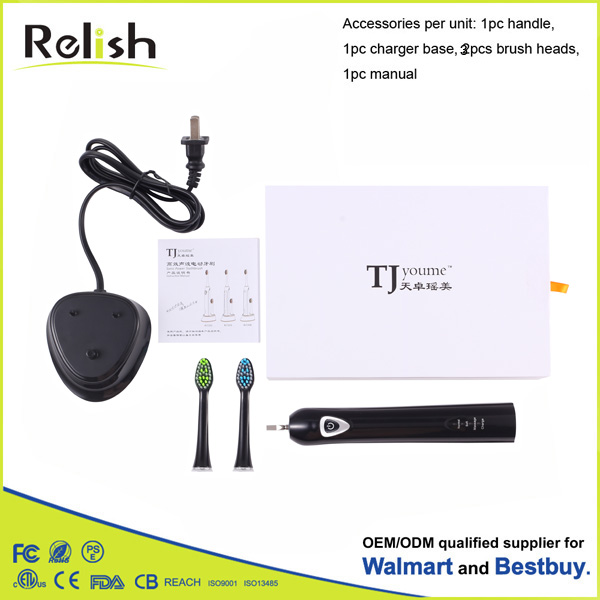
Lithium-ion battery
This battery can be found in most high-quality models, such as Philips sonic toothbrushes and Panasonic sonic toothbrushes. It is characterized by a particularly high energy output and a long service life. Due to its particularly high performance and other advantages, this type of battery is also used in cell phones, among other things.
The most important properties of a Li-Ion battery
Low self-discharge
Anyone who, for example, has not used classic batteries for a long time knows that they self-discharge without being used. The self-discharge rate of a lithium-ion battery is half as high, which is why it is still fully operational even after a long period of non-use.
No memory effect
A major disadvantage of a NiMH battery is that if it is not fully discharged and charged, it wears out and its lifespan is shortened. This process is called the memory effect. This memory effect does not apply to a Li-Ion battery, which makes it easier to use and has a longer service life.
High performance
Even if the charge level of the battery is low, the electric toothbrush continues to work
with this battery at full power.
Longer battery life
Compared to a NiMH battery, lithium-ion batteries have a significantly longer battery life. Sometimes even up to 60 days. On average, however, up to 3 weeks.
Shorter loading time
While some NiMH batteries have to be charged for up to 24 hours, a lithium-ion battery, depending on the version, only needs 6-18 hours to be fully charged.
Higher manufacturing costs
Since the production costs of a lithium-ion battery are higher, this is also reflected in the price of sonic toothbrushes. However, this can be justified by the many advantages mentioned, since the performance and durability are significantly better.
NiMH battery (nickel metal hydride batteries)
The NiMH battery can be found in many inexpensive models or rotary toothbrushes. The technology is a bit out of date, but not bad. It depends, among other things, on the individual quality of the built-in NiMH battery. Oral B, for example, uses high-quality NiMH batteries in its electric toothbrushes. Inexpensive NoName manufacturers often use cheaper NiMH batteries, which is why some devices give up their ghost after a short time.
The most important properties of a NiMH battery
Self-discharge
NiMH batteries discharge themselves even if they are not used
Not suitable for particularly cold temperatures
They are not suitable for temperatures below -20 degrees, i.e. not suitable for traveling to particularly cold countries.
Memory Effekt
NiMH batteries have a memory or battery inertia effect. They should be fully charged and discharged, otherwise the battery life will be shortened.
Battery life
the battery life averages 5-10 days
Loading time
Compared to a lithium-ion battery, the charging time is quite long. Depending on the quality of the battery, it is up to 24 hours. You should also take an electric toothbrush with a NiMH battery from the charging station after it is fully charged, as it has to be completely discharged again.
Rapid decline in performance
If the NiMH battery is no longer sufficiently charged, its performance is also reduced. A lithium-ion battery, on the other hand, continues to clean at full power even when the charge level is low.
You can usually find out which battery is installed in the respective electric or sonic toothbrush in the item description. In the operating instructions you will also find useful information on how to handle the battery in order to maximize its service life.
As a professional manufacturer of electric toothbrush and oral irrigator / water flosser, Shenzhen Relish provides various types of electric toothbrush wholesale and OEM customized services. You can also wholesale water flosser from Relish at factory price. We can provide you highly competitive prices and look forward to working with you.

- All comments(0)

 日本語
日本語 Español
Español Deutsch
Deutsch 中文
中文